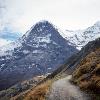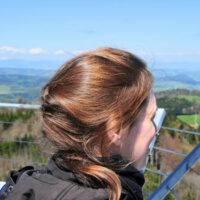
8889 posts
Via Konolfingen and Langnau is very lovely rural Emmenthal country-side I am led to believe. Do it.

7567 posts
Hi Rockoyster-
<<“Via Konolfingen and Langnau is very lovely rural Emmenthal country-side I am led to believe.”>>
I would certainly be one of the leaders for that opinion.
You are more likely to see Emmental spelled without the “h” in Switzerland, by the way. 😉
Slowpoke

72625 posts
>> Learning, learning.
It’s sometimes easier to remember if you know why something is the way it is.
Emmental is a compound word consisting of three elements:
- Emme (the name of the river)
- n = an element binding both words (often because it makes pronunciation easier)
So you end up with Emmental = valley of the Emme (river)
Most other words you see with -tal at the end will be a valley. Those with -see at the end will be a lake.
And now you would like to learn some more, right 😉 (Well, you could pretend!)
I got the following info from a website called swissworld.org in 2011. This domain no longer exists, so I can’t link to it.
The names of countless Swiss towns and villages hint at the nature of the country.
- Place names that contain the syllable -berg indicate a mountain, those in -bühl, -egg, -halden or -rain point to a hill.
- A name containing -moos indicates a swamp, while -ried was a reed bed.
- Fields also occur frequently, as in -acher, -feld, -matt or -wang.
- Ticino has many place names containing words such as campo (field), prato (meadow), piano (flat) or monte (mountain).
The names in French-speaking Switzerland are harder to recognise, since the words have developed in different ways. But
- praz/pré indicate a meadow
- sax/sex/scex are from a word for rock.
While names ending in -wil or -weil derive from farmsteads, many others contain hidden reminders of how hard the early inhabitants had to work to clear the land in the first place.
- Rüt(l)i, Schwand(en), Brand, and Stock all relate to ways of clearing the ground
- In Ticino names like ronco and arzo also refer to ways of clearing the land, by digging up the wild vegetation or burning the trees
- The French equivalents include variations on essert, cierne, breuleux, or ars.
And for something on the amusing side: a peak at Glacier 3000 is officially called Sex Rouge (red rock). The company operating the cable car there renamed it in their promotional material and on their website “for touristic reasons” as Scex Rouge!
That info came from the Swiss Government site http://www.geo.admin.ch/, but is no longer online.
Alpenrose

8889 posts
Hi Alpenrose,
A wonderful tutorial – thanks so much. The Glacier 3000 Sex Rouge would be a passable name for a brothel I would have thought. Clear why the changed the name.
Am I correct in thinking Glacier 3000 is a company rather than an actual place? Always struck me as an odd name.

72625 posts
>> Am I correct in thinking Glacier 3000 is a company rather than an actual place? Always struck me as an odd name.
Yes, according to Wikipedia, it is the name of the company that operates the cable car. The term is used in marketing, much like “Top of Europe” for the Jungfraujoch. The “3000” part probably comes from the altitude of Sex Rouge/Scex Rouge, which is 2,971 metres above sea level.
Another example of incorporating altitude into a name for marketing purposes is the youth hostel at Saas-Fee, which markets itself as Wellness Hostel 4000. Marketing material for Saas-Fee frequently promotes its views of about 13 peaks of around 4,000 metres.
Alpenrose

72625 posts
Hi Alpenrose
Thanks for that tutorial on place names. I knew most of the German derivations but not the Italian or French ones.
Maggie

72625 posts
Hi Maggie,
Glad you enjoyed reading it!
Alpenrose
